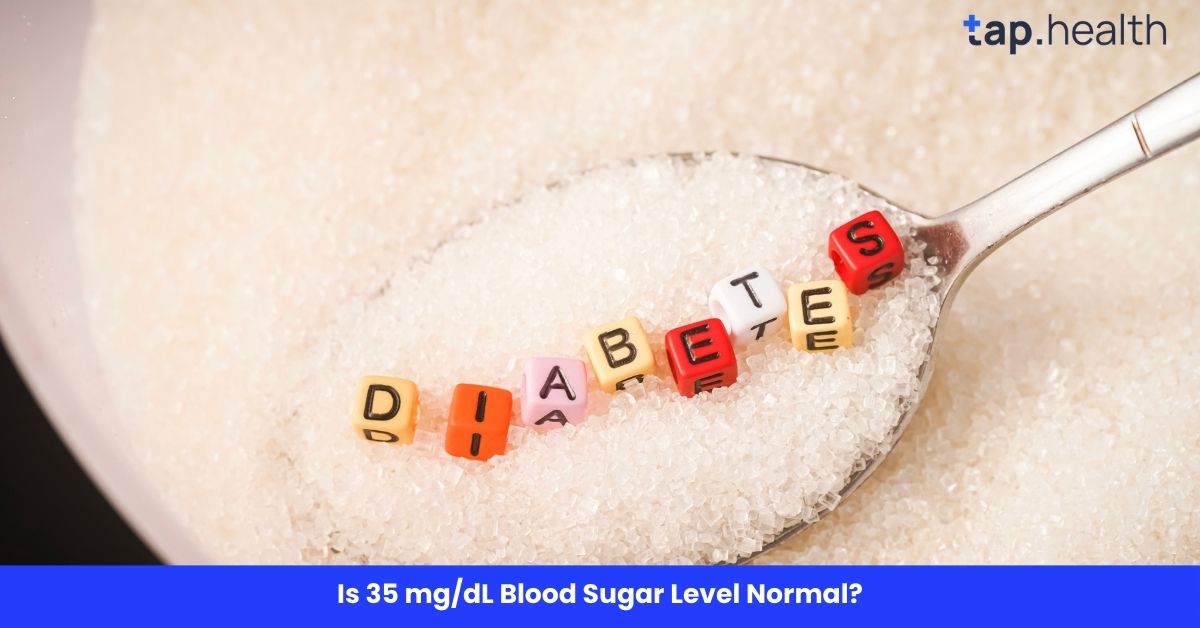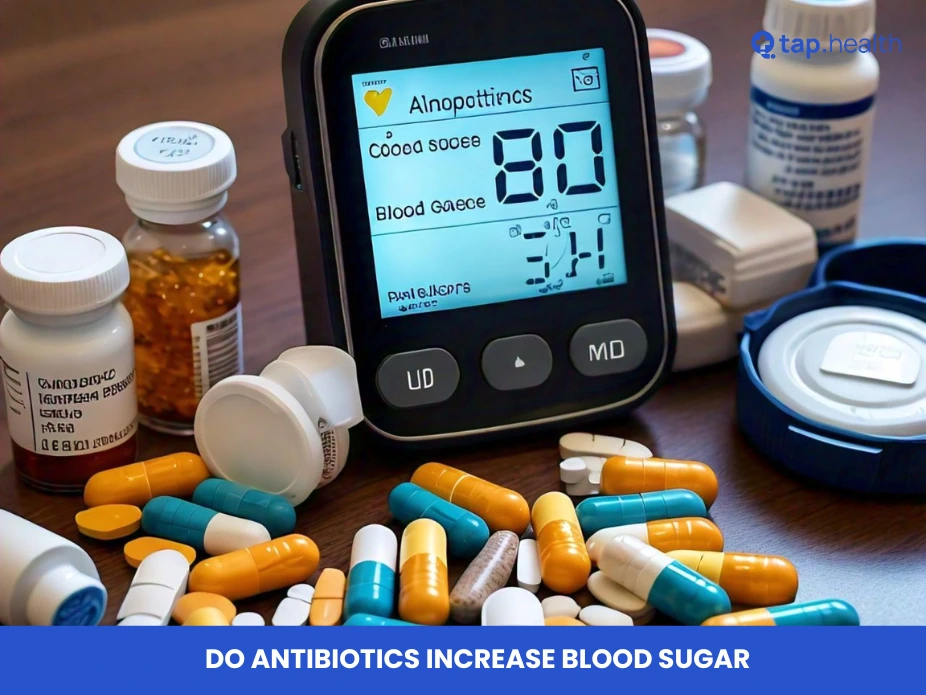A blood sugar level of 35 mg/dL is severely low and is considered a medical emergency. Low blood sugar, or hypoglycemia, occurs when the glucose level in your blood drops below normal levels, and at 35 mg/dL, it can have serious health implications. This article will explain why a 35 mg/dL blood sugar level is concerning, what causes it, the symptoms to look out for, and how to manage it.
What is a Normal Blood Sugar Level?
Blood sugar (also known as glucose) is the primary energy source for your body. It’s important to understand what a normal blood sugar range looks like before we discuss the dangers of hypoglycemia.
Here are the general guidelines for normal blood sugar levels:
- Fasting (before meals): 70-99 mg/dL
- After meals (2 hours post-meal): Less than 140 mg/dL
- Random (any time of the day): Less than 200 mg/dL
If your blood sugar level falls below 70 mg/dL, it is considered low, and anything below 50 mg/dL requires immediate action to prevent serious complications.
plications.
Is a 30 Sugar Level Normal?
No, a 35 mg/dL blood sugar level is not normal and is considered severely low. This is a condition known as hypoglycemia, where the glucose level in your blood falls below the healthy threshold, usually below 70 mg/dL. At 35 mg/dL, your body is facing a serious medical emergency that requires immediate intervention.
How Bad is a 35 Blood Sugar Level?
A blood sugar level of 35 mg/dL is dangerously low, and it’s much lower than normal ranges. When your blood sugar level falls this low, it’s an indication that your body is unable to meet its energy needs. This condition, known as hypoglycemia, is particularly concerning because it can lead to severe health issues if not treated immediately.
The Effects of a 35 mg/dL Blood Sugar Level:
At this level, your body will likely show several immediate symptoms of hypoglycemia, such as:
- Severe confusion and difficulty concentrating
- Shaking or trembling
- Dizziness or lightheadedness
- Profuse sweating
- Rapid heartbeat (due to adrenaline release)
If blood sugar continues to stay low and isn’t treated, you can experience:
- Loss of consciousness
- Seizures
- Coma
- Permanent brain damage (if untreated for a prolonged period)
Because the brain relies heavily on glucose for fuel, a blood sugar of 35 mg/dL can severely impair brain function, affecting decision-making, motor skills, and even speech. Immediate action is necessary to prevent life-threatening com
What Happens at a 35 mg/dL Blood Sugar Level?
A blood sugar level of 35 mg/dL is well below the normal threshold and is considered severe hypoglycemia. At this point, the body lacks enough glucose to perform basic functions, especially in the brain, which relies on glucose to operate.
Effects on the Body:
- Brain Impairment: The brain’s primary fuel source is glucose, and at such a low level, cognitive function is severely impaired. You may experience confusion, poor concentration, or even difficulty speaking clearly.
- Physical Symptoms: The body releases stress hormones like adrenaline to counteract the low glucose level. This can result in symptoms like sweating, shaking, and a rapid heartbeat.
- Loss of Consciousness: If untreated, hypoglycemia at this level can cause a person to lose consciousness, fall into a coma, or even suffer seizures.
Why 35 mg/dL Is Dangerous:
At this level, the body is in a state where it can’t produce or release glucose quickly enough to meet its energy needs. This can lead to serious complications if immediate action isn’t taken. Without intervention, prolonged hypoglycemia can cause irreversible damage to the brain and other organs.
Causes of a 35 mg/dL Blood Sugar Level
Several factors can lead to a 35 mg/dL blood sugar level. Most often, this happens in people with diabetes due to insulin treatment, but there are other causes as well.
1. Diabetes and Insulin Overdose
People with type 1 or type 2 diabetes may take insulin or other medications to control their blood sugar. However, if insulin is administered in too high of a dose or at the wrong time, it can cause blood sugar levels to fall dangerously low.
2. Skipping Meals or Eating Inadequate Meals
Skipping meals or eating insufficient food for the amount of insulin taken can also lead to hypoglycemia. If the body doesn’t have enough glucose from food, it can’t maintain normal blood sugar levels.
3. Excessive Physical Activity
When you exercise vigorously or for an extended period without eating enough, your muscles use up the glucose in your bloodstream. If you don’t replenish it with food, it can lead to hypoglycemia.
4. Alcohol Consumption
Drinking alcohol, especially without eating food, can lower your blood sugar significantly. Alcohol can interfere with the liver’s ability to release stored glucose into the bloodstream, putting you at risk of hypoglycemia.
5. Medications
Certain medications, including sulfonylureas, which are often prescribed to people with diabetes, can cause your blood sugar to drop too low. Other medications like beta-blockers and some antibiotics can also affect glucose metabolism.
Symptoms of a 35 mg/dL Blood Sugar Level
At 35 mg/dL, your body will show severe symptoms of hypoglycemia, which can become life-threatening if not addressed quickly. Recognizing these symptoms is crucial for prompt intervention.
Early Symptoms:
- Shakiness or trembling
- Sweating
- Hunger
- Nausea
- Dizziness or lightheadedness
- Irritability or anxiety
- Fatigue or weakness
Severe Symptoms:
- Confusion or disorientation
- Difficulty speaking
- Blurred vision
- Rapid heartbeat
- Severe drowsiness or lethargy
- Loss of consciousness
- Seizures
If you experience any of these symptoms, it’s important to treat low blood sugar immediately.
What to Do if Your Blood Sugar is 35 mg/dL?
A blood sugar level of 35 mg/dL is an emergency situation that requires immediate intervention. Here’s what you should do:
1. Consume Fast-Acting Carbohydrates
The quickest way to raise blood sugar levels is to consume foods or drinks that contain fast-acting carbohydrates. These will raise your blood sugar quickly:
- Glucose tablets (recommended amount varies by brand)
- Fruit juice (about half a cup)
- Regular soda (not diet soda, about half a cup)
- Honey (1-2 tablespoons)
- Sugar (1-2 teaspoons, dissolved in water)
2. Wait and Recheck
After consuming fast-acting carbs, wait for about 15 minutes and then recheck your blood sugar. If it remains below 70 mg/dL, consume another dose of fast-acting carbohydrates and recheck in another 15 minutes.
3. Follow Up with a Snack
Once your blood sugar has risen above 70 mg/dL, eat a balanced snack that contains both carbohydrates and protein. For example, crackers with peanut butter, a small sandwich, or cheese and whole-grain crackers.
4. Seek Medical Help If Necessary
If the blood sugar remains low after repeated interventions, or if the person loses consciousness or has a seizure, call emergency medical services immediately.
Preventing Low Blood Sugar
If you have diabetes or another condition that affects your blood sugar, preventing episodes of hypoglycemia is essential. Here’s how to reduce the risk of having your blood sugar drop too low:
1. Monitor Blood Sugar Regularly
Regular monitoring of blood glucose is key to identifying any imbalances before they become serious. This is especially important for those using insulin or other medications that can cause low blood sugar.
2. Eat Regular Meals
To maintain stable blood sugar levels, make sure you eat regular, balanced meals that combine carbohydrates, protein, and healthy fats. Avoid skipping meals or eating too little.
3. Adjust Medications As Needed
If you’re on insulin or diabetes medications, consult your healthcare provider about adjusting doses, especially if you’re experiencing frequent episodes of hypoglycemia. Never adjust medications without professional advice.
4. Be Prepared for Exercise
If you plan to exercise, check your blood sugar before, during, and after activity. Exercise can cause blood sugar to drop, so it’s important to monitor and adjust your diet or insulin intake accordingly.
5. Limit Alcohol
Drink alcohol in moderation, and never drink on an empty stomach. Alcohol can impair your liver’s ability to release glucose into your bloodstream, leading to low blood sugar.
Frequently Asked Questions (FAQ) on Is 35 mg/dL Blood Sugar Level Normal?
1. What is a normal blood sugar level?
A normal blood sugar level for most people is:
- Fasting (before meals): 70-99 mg/dL
- After meals: Less than 140 mg/dL
- Random (any time): Less than 200 mg/dL
Anything below 70 mg/dL is considered low.
2. Can a 35 mg/dL blood sugar level be dangerous?
Yes, a 35 mg/dL blood sugar level is severely low and can be dangerous. If not treated quickly, it can lead to seizures, unconsciousness, or even death. Immediate treatment is required.
3. How do I raise my blood sugar from 35 mg/dL?
To raise blood sugar from 35 mg/dL:
- Consume fast-acting carbohydrates like glucose tablets, fruit juice, or regular soda.
- Wait 15 minutes, recheck your blood sugar, and repeat if necessary.
- Follow up with a balanced snack.
4. What are the symptoms of low blood sugar?
Symptoms include shaking, sweating, dizziness, confusion, rapid heartbeat, blurred vision, and in severe cases, loss of consciousness or seizures.
5. How can I prevent my blood sugar from dropping too low?
To prevent low blood sugar:
- Monitor your blood sugar regularly.
- Eat regular, balanced meals.
- Adjust insulin or medications as needed.
- Be cautious with exercise and alcohol.
Read this : How Long Do Diabetics Live After Amputation?
Conclusion
A 35 mg/dL blood sugar level is a serious condition that requires immediate attention. Low blood sugar can cause dangerous symptoms like confusion, seizures, and loss of consciousness. By following proper management techniques and monitoring your blood sugar regularly, you can reduce the risk of hypoglycemia and keep yourself safe.
If you experience symptoms of low blood sugar, always act quickly by consuming fast-acting carbohydrates and seeking medical help if needed. And remember, if you have diabetes, work closely with your healthcare provider to manage your blood glucose levels safely.
References:
- Mayo Clinic – Hypoglycemia (Low Blood Sugar)



